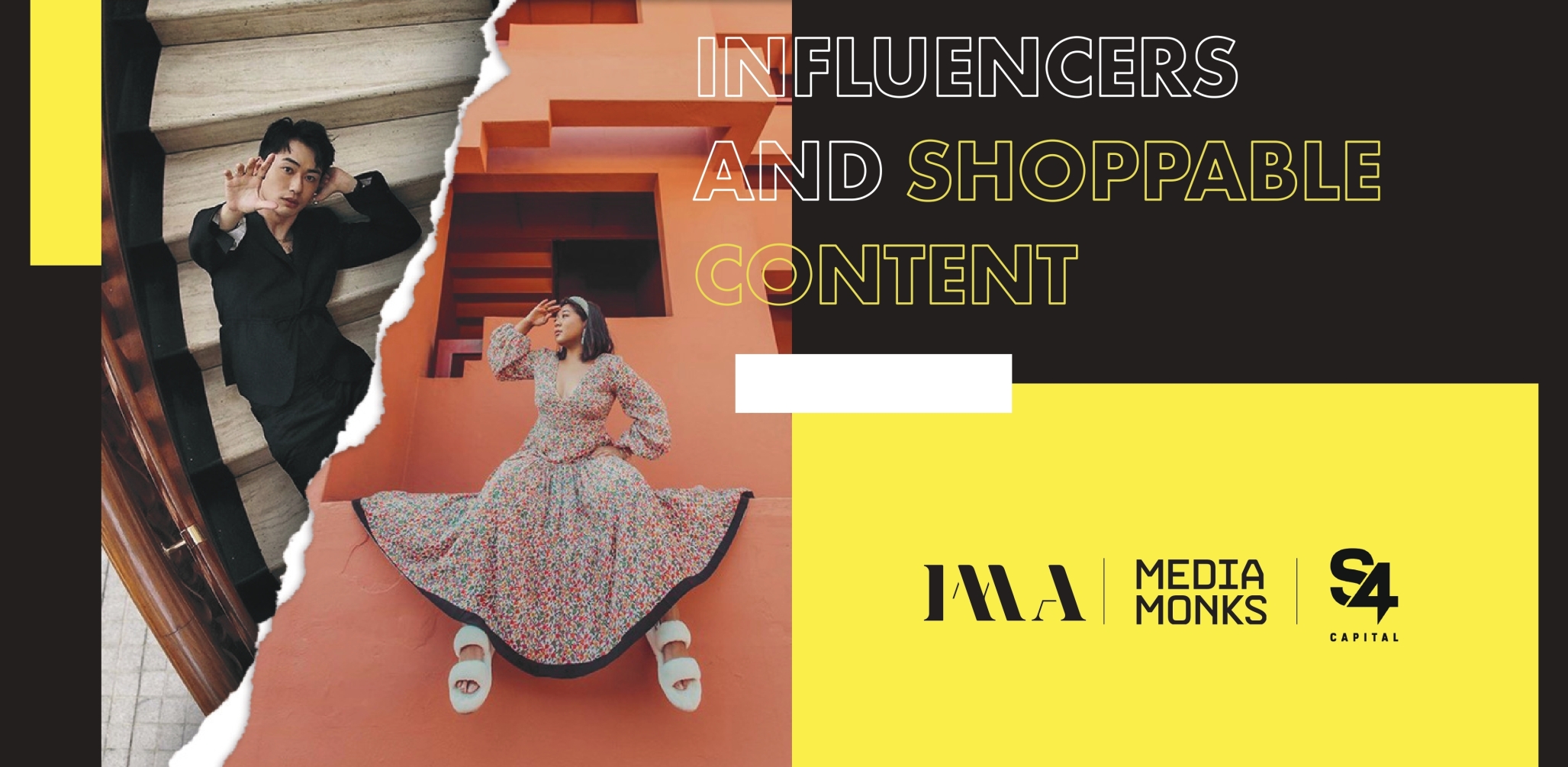The Revolution of Shoppable Content

It is no secret that social media had an incredibly fast evolution in the last decade—so much so we can only speculate how far the next few years will take us. Today, social content plays a fundamental role in the consumer journey. While new platforms and features are introduced seemingly every day, marketers must strive to be at the forefront of social media trends and make the most of the emerging technological possibilities like their brands depend on it—because they do.
A new white paper from IMA, our influencer activation team, seeks to guide brands through the next era of social media: shoppable content. Titled Influencers and Shoppable Content: the Future of Social Media, the report covers the habits that COVID-19 changed forever and how they’ve impacted the seamless fusion of content and commerce across platforms. It also provides a clear outlook on the role influencers play in virtual shopping and the era of everywhere commerce.
The Future of Shopping is Social
The paper starts by setting the scene with statistics on the current state of online shopping, and its acceleration during the pandemic. In a matter of months, skeptic consumers who were previously reluctant to adopt online shopping habits were suddenly “filling up their digital carts,” and by April 2020, online retail orders had grown 146% worldwide.
According to IMA, brands that tap into this new consumer behavior have the opportunity to “establish a robust social presence and take advantage of third-party ecommerce platforms.” But online shopping is no longer channel-specific. Both social and ecommerce platforms are already adding features that will revolutionize how consumers spend their time online and make purchases—allowing users to shop directly from social media channels and blurring the lines between content and commerce. Our BrandLab partnership with Mercado Libre (LATAM’s ecommerce giant) and L’Oréal Paris serves as a clear example: we developed an ideal “digital destination” for beauty enthusiasts with video tutorials led by recognizable influencers, which help differentiate the brand and its products while providing an improved user experience for shoppers.

"Beauty Click" combines content and commerce through video tutorials
Amazon is placing its bets on shoppable livestreaming through Amazon Live, too. The platform allows sellers to promote their products through their own livestreams with a smart addition: a carousel where shoppers can browse and seamlessly purchase featured items. Similarly, Instagram promises to amplify its influence in the shopping process with the “checkout” feature, which is swiftly “transforming the platform into an immersive storefront for people to explore and purchase” without leaving the app, according to the report.
Everywhere commerce will continue to rise in prominence and competitiveness, and platforms are also likely to incorporate AR and AI to increase customer confidence—enabling them to try before they buy. This will open a gateway to new entertaining shopping experiences that build user engagement as consumers share these virtualized experiences on their social media accounts.
From Awareness To Conversion, Influencers Conquer The Funnel
Of course, influencers will be key to brands as they envision how to show up in a revolutionized social media ecosystem. As deft content creators, natural conversation-starters and production powerhouses, influencers will become ever-more important for any brand’s social strategy—a must-have in any marketing mix.
As new, improved ecommerce functionalities are introduced, influencers are often early adopters who perfect delivering relevant content at speed. And they are the most proficient at doing so, too, finding meaningful ways that resonate with their audiences and enable seamless implementations that raise both awareness and conversions. Tapping into communities with a human touch, influencer-generated content is more likely to be perceived as authentic by the audience—especially within niche communities, where engagement levels tend to be higher. According to the white paper, 63% of consumers aged 18-34 years old say they trust what influencers say about brands much more than what brands say about themselves in their advertising.

The authenticity that influencers bring can help define brands’ success in a shoppable ecosystem.
This authenticity that influencers bring to the table can help define brands’ success in a shoppable social ecosystem as long as the balance is right. “It’s important to keep in mind though that in order to maintain the genuine relationships between influencers and brands, these ecommerce features should be used in a meaningful way that resonates with audiences,” says Maddie Raedts, IMA Founder and Global Head of Social, Fashion & Luxury at Media.Monks. “Don’t merely add shoppability to each post that features products, as it can come across very spammy and have the opposite effect.”
From livestreams with purchase options to Instagram posts with shoppable tags, influencer marketing will conquer the funnel from top to bottom—not only inspiring audiences but also driving direct, more measurable conversions. In addition to being at the forefront of social shopping, influencers are the enablers and catalysts of this evolution. For those who want to learn more about how shoppable content is revolutionizing customer behavior across platforms, Influencers and Shoppable Content: the Future of Social Media provides invaluable insights, and it’s available for download below. Discover the next generation of online shopping.
Related
Thinking
Sharpen your edge in a world that won't wait
Sign up to get email updates with actionable insights, cutting-edge research and proven strategies.
Monks needs the contact information you provide to us to contact you about our products and services. You may unsubscribe from these communications at any time. For information on how to unsubscribe, as well as our privacy practices and commitment to protecting your privacy, please review our Privacy Policy.



